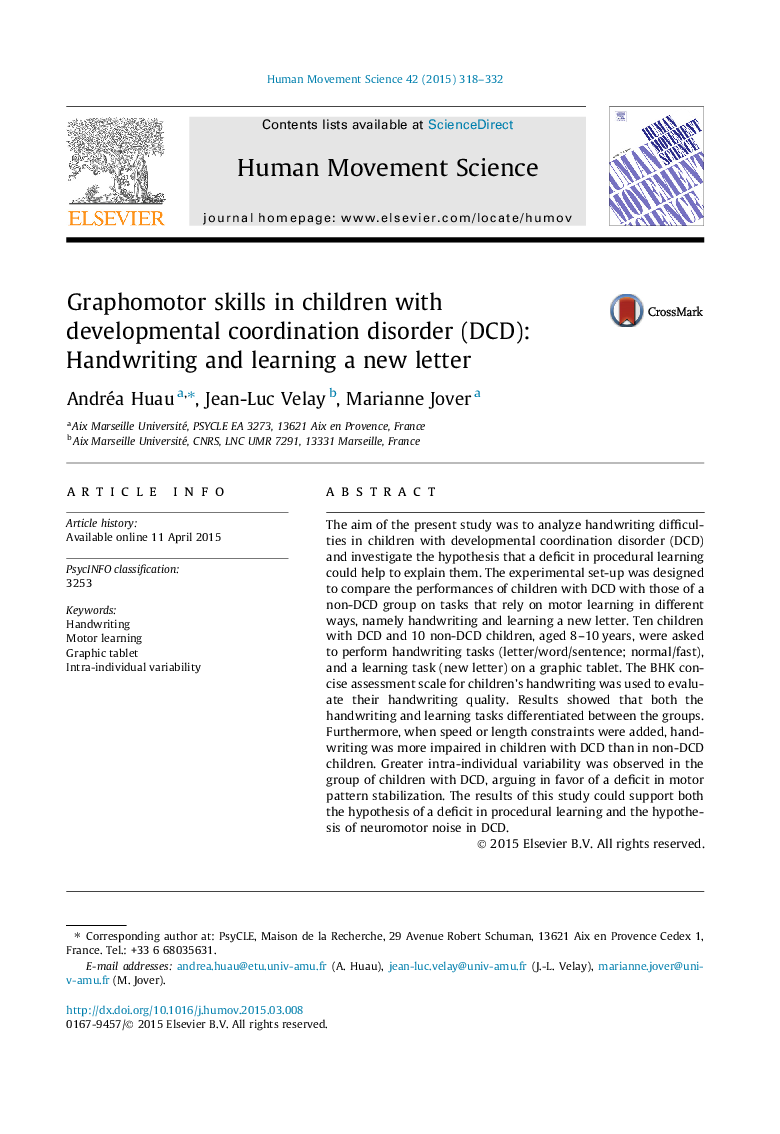| Article ID | Journal | Published Year | Pages | File Type |
|---|---|---|---|---|
| 928251 | Human Movement Science | 2015 | 15 Pages |
•Speed or length constraints strongly impact handwriting in children with DCD.•High intra-individual variability seems to be a stable feature in the children with DCD.•The learning task did not provide clear-cut results.•Results can be explained both by a deficit in motor learning or by neuromotor noise in DCD.
The aim of the present study was to analyze handwriting difficulties in children with developmental coordination disorder (DCD) and investigate the hypothesis that a deficit in procedural learning could help to explain them. The experimental set-up was designed to compare the performances of children with DCD with those of a non-DCD group on tasks that rely on motor learning in different ways, namely handwriting and learning a new letter. Ten children with DCD and 10 non-DCD children, aged 8–10 years, were asked to perform handwriting tasks (letter/word/sentence; normal/fast), and a learning task (new letter) on a graphic tablet. The BHK concise assessment scale for children’s handwriting was used to evaluate their handwriting quality. Results showed that both the handwriting and learning tasks differentiated between the groups. Furthermore, when speed or length constraints were added, handwriting was more impaired in children with DCD than in non-DCD children. Greater intra-individual variability was observed in the group of children with DCD, arguing in favor of a deficit in motor pattern stabilization. The results of this study could support both the hypothesis of a deficit in procedural learning and the hypothesis of neuromotor noise in DCD.
